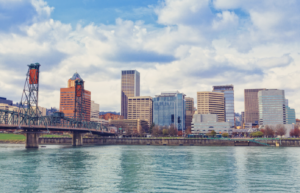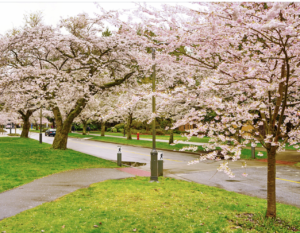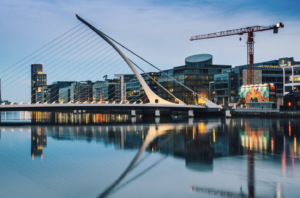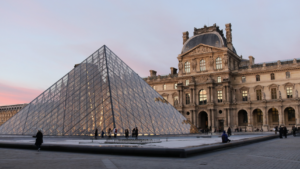Anúncios
Lakshadweep’s coral islands attracted vacationers when Prime Minister Modi visited last month. Can the islands’ delicate nature sustain tourist growth?
Blue hues greet you when you dock in India’s Arabian Sea archipelago of Lakshadweep, 490km west of Kochi. The short stretch with hundreds of coconut palms nearest to the white beach is pale blue. In the deep sea, the water is emerald blue and turquoise farther out.
“It’s mesmerising, really,” said Indian Institute of Technology geologist Shradha Menon, who visited the islands three times in two years to research carbon sedimentation. She was often one of the few strangers on the 36-seat Kochi-Lakshadweep jet transporting islanders and government officials.
Anúncios
Indian tourists are now more interested in the islands after Prime Minister Narendra Modi visited Lakshadweep in January 2024. He posted photos of him wandering on the pristine beaches and snorkeling in the clean seas on his X (previously Twitter) and YouTube accounts, earning hundreds of millions of views. He told the people, “Lakshadweep’s beauty is indescribable. I recommend Lakshadweep to beach and island lovers worldwide.”
Since then, the archipelago has gained attention. Google searches for “Lakshadweep” reached a 20-year high, according to The Economic Times. YouTube videos and Instagram reels filled the internet while major media published travel pieces. After Modi’s visit, MakeMyTrip, India’s largest travel booking site, reported 3,400% more Lakshadweep in-platform searches.
Anúncios
The Society for Promotion of Nature Tourism and Sports (SPORTS) in Lakshadweep has never had busier phone lines. Since last month, Abdul Samad, one of SPORTS’ two water sports instructors who helped Modi snorkel on the island in January, has received at least 10 visitor queries a day. from Modi’s visit, Cordelia Cruises, which sails from Mumbai, Kochi, and Goa to Lakshadweep from September 2021, has had 2,500% more booking requests. Samad said that Suheli and Kadmat are getting new beach and water villas, and India’s finance minister Neermala Sitharaman referenced Lakshadweep in her budget address on 1 February when she spoke about greater connection to India’s islands to boost tourism.
Lakshadweep’s 36 islands—12 atolls, three reefs, and five submerged banks—are an Arabian Sea dot. About 70,000 people live on the 10 islands, principally fishing and growing coconuts.
The white-sand islands are unlike India’s other beaches. Vardhan Patankar, conservation director of GVI, which enables conservation programs worldwide, noted that Lakshadweep, which means a lakh (100,000) islands in Sanskrit, is India’s lone atoll and lies barely above sea level. Ancient volcanoes erupted and sunk to just above sea level, leaving these atolls with a coral ring. “Lakshadweep, which is just a few metres above the sea level, is protected by the coral reefs,” he remarked.
Climate change affects Lakshadweep like other islands. The Lakshadweep Research Collective reports that coastal erosion is quickly decreasing the archipelago’s land cover, with Parali 1 on Bangaram atoll lost in 2017. In the previous two decades, the islands have had four severe ENSO-related temperature anomalies and three devastating cyclones, causing extensive coral bleaching.
“According to current, conservative predictions of scientists, Lakshadweep will submerge in the sea by 2050,” he stated. “If there is added pressure on the island due to tourism and other development projects or industrial fishing, it could be disastrous to the islands and its ecology, hastening the submergence.”
SPORTS will continue to limit visitors using a permit system to mitigate the predicted surge. They also want cruise ships and yachts to sail to the island to decrease overnight stays, reduce trash, and protect the island’s scarce ground water.
However, experts say massive ships might damage the island’s fragile coral reef wall, which prevents storm surges. No one can deny the island’s large carbon footprint or reef degradation from high-end home building. Patankar also worries that resorts may boost commercial fishing on the island to feed guests.
“Tourism growth on the island has to be highly regulated and must be able to sustain the ecology of Lakshadweep,” he said.
Visitors to Lakshadweep should travel light. Luckily, there are several low-impact activities
Lakshadweep’s shallow seas and abundant marine life and reefs make it one of India’s greatest snorkeling and diving spots. “The visibility underwater is exceptional and as a result the reef looks spectacular during snorkelling and diving sessions,” he remarked.
You may encounter snappers, groupers, moray eels, butterflyfish, and black botched sting rays underwater. Sometimes you can glimpse green sea turtles from the shore. The interesting yellowmask surgeonfish becomes purple as it ages.
Life appears to slow down in Lakshadweep, which gives you a bizarre sensation of tranquility.
Due to low light and air pollution, the night sky is stunning. “I have never seen so many stars, constellations and shooting stars in my life as I saw in my three-day trip on the island,” remarked Shalina CV, who visited Lakshadweep with her family in September 2023 She said “Lakshadweep is that beautiful, serene island where life seems to slow down and where a surreal sense of calm descends upon you.”
Night fishing is another must-do. Tourists may boat with fishermen and attempt efficient pole-and-line fishing for skipjack and yellowfin tuna. A few government-run diving centers provide kayaking, wind surfing, parasailing, and other watersports.
Many local homestays provide clean and pleasant accommodations, such as Abdul Rahman Homestay (+91 8547 660 936) and Feroze Homestay (+91 9447 747 458) on Agatti island and Kinak (+91 9447 474 332) on Kalpeni island. Private tourism businesses like Landiago, owned by Shabab Ahmed, carry visitors to Minicoy Island’s Juma Masjid and an antique lighthouse. Booking visits with locals helps Lakshadweep’s economy and lets them share their expertise of the islands.
“I believe locals will protect the island best. Working with them to empower and develop their abilities to defend the islands is the greatest chance for the ecosystem “Patankar said.






